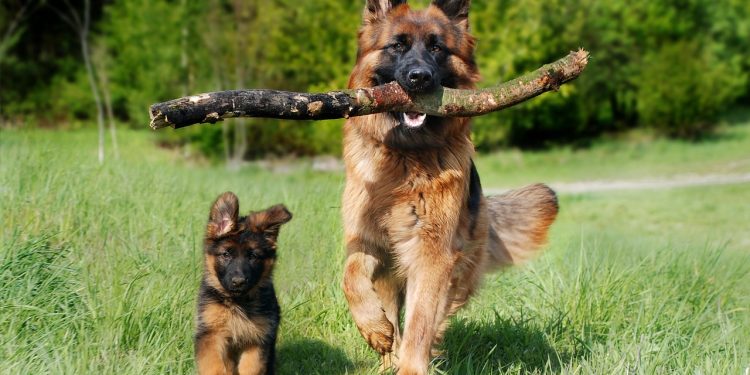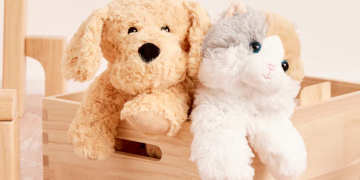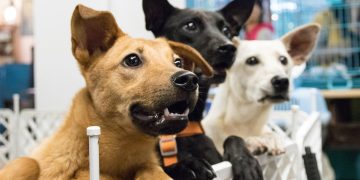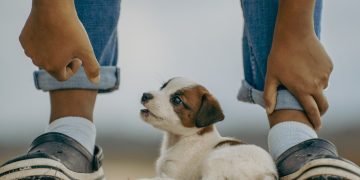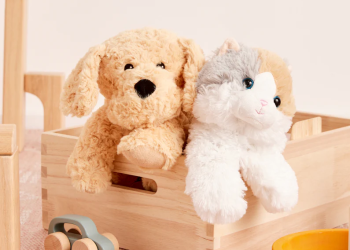Grooming your dog at home can be a rewarding experience that strengthens the bond you share with your furry friend. It’s more than just a way to keep your dog looking good; regular grooming also contributes to their overall health and well-being. With the right tools, techniques, and patience, you can turn this essential task into a pleasant routine for both you and your dog. Here’s how to get started.
Understanding Your Dog’s Grooming Needs
Every dog is unique, and their grooming requirements depend on factors such as breed, coat type, size, and activity level. Long-haired breeds like Golden Retrievers or Shih Tzus require more frequent brushing to prevent matting, while short-haired breeds like Beagles or Boxers might need less maintenance. Knowing your dog’s specific needs will help you tailor the grooming process effectively.
Gathering the Right Tools
Before starting, assemble the necessary grooming supplies. Investing in high-quality tools makes the process more efficient and comfortable for your dog. Essential items include:
- Brushes and Combs: Choose a brush suitable for your dog’s coat type, such as a slicker brush for long-haired breeds or a bristle brush for short-haired breeds.
- Clippers and Scissors: Use dog-specific clippers for trimming and scissors for detailed work around sensitive areas.
- Shampoo and Conditioner: Opt for a gentle, dog-specific shampoo to avoid skin irritation.
- Nail Trimmers: Choose a guillotine-style or scissor-style nail clipper based on your comfort and your dog’s nail size.
- Ear Cleaner and Cotton Balls: Keep your dog’s ears clean to prevent infections.
- Toothbrush and Dog Toothpaste: Regular dental care is crucial for your dog’s oral health.
Setting Up a Grooming Area
Create a calm and safe environment for grooming. Choose a quiet space with good lighting and ensure your dog feels comfortable. A non-slip mat can help keep your dog steady during baths or trimming sessions. Keep treats nearby to reward good behavior and make the experience positive.
Brushing Your Dog’s Coat
Brushing is one of the most important aspects of grooming, as it removes dirt, loose fur, and tangles. It also distributes natural oils, promoting a healthy, shiny coat.
- Frequency: Brush long-haired dogs daily, while short-haired dogs can be brushed once or twice a week.
- Technique: Start at the head and work your way down the body. Use gentle strokes and be mindful of sensitive areas like the belly and tail.
- Detangling: For matted fur, use a detangling spray and a comb to work through knots gently.
Bathing Your Dog
Regular baths help keep your dog’s skin and coat clean and healthy, but overbathing can strip natural oils and cause dryness.
- Frequency: Bathe your dog every 4-6 weeks or as needed based on their activity level and odor.
- Preparation: Brush your dog before bathing to remove loose fur and tangles.
- Bathing Process:
- Use lukewarm water and thoroughly wet your dog’s coat.
- Apply shampoo, lather gently, and rinse thoroughly to avoid residue.
- Follow up with a dog-specific conditioner if needed.
- Towel dry your dog or use a blow dryer on a low heat setting for thicker coats.
Trimming Nails
Long nails can cause discomfort and lead to posture issues in dogs. Regular trimming ensures your dog’s comfort and health.
- Frequency: Trim your dog’s nails every 3-4 weeks or when you hear them clicking on hard surfaces.
- Technique:
- Hold the paw firmly but gently.
- Trim a small portion of the nail, avoiding the quick (the sensitive area that contains blood vessels).
- Use a nail file to smooth rough edges.
Cleaning Ears
Keeping your dog’s ears clean prevents infections and discomfort.
- Frequency: Check and clean your dog’s ears weekly, especially for breeds with floppy ears like Cocker Spaniels.
- Technique:
- Use a dog-specific ear cleaner and cotton balls.
- Gently wipe the outer ear without inserting anything into the ear canal.
Dental Care
Dental hygiene is often overlooked but is essential for your dog’s overall health.
- Frequency: Brush your dog’s teeth 2-3 times a week using dog-specific toothpaste.
- Technique:
- Use a soft-bristled toothbrush or a finger brush.
- Focus on the outer surfaces of the teeth and reward your dog afterward.
Managing Shedding
Shedding is a natural process, but it can be managed with regular grooming.
- Tools: Use deshedding tools or grooming gloves to remove loose fur effectively.
- Routine: Brush more frequently during seasonal shedding periods.
Handling Nervous Dogs
If your dog is anxious about grooming, patience and positive reinforcement are key.
- Start with short grooming sessions and gradually increase the duration.
- Use treats and praise to reward good behavior.
- Consider consulting a professional groomer or a trainer if needed.
Knowing When to Seek Professional Help
While grooming at home is manageable for most pet owners, certain tasks may require professional expertise. Seek a groomer’s help for:
- Severe matting or tangles that are difficult to remove.
- Specialized cuts for specific breeds.
- Behavioral challenges that make at-home grooming unsafe.
Grooming your dog at home is a fulfilling way to care for their needs while building trust and strengthening your relationship. With the right approach, it becomes a routine that both you and your dog can look forward to.

